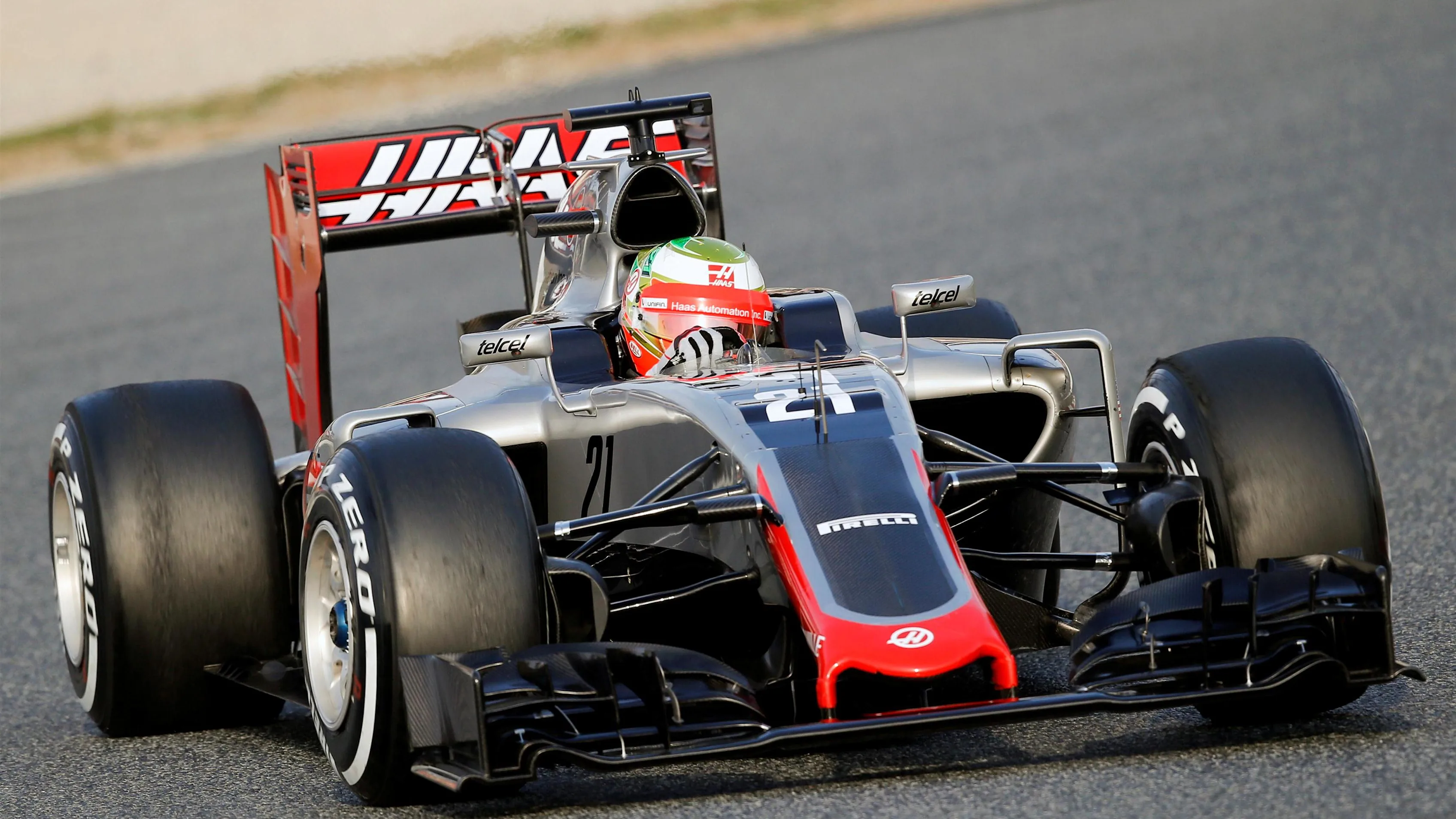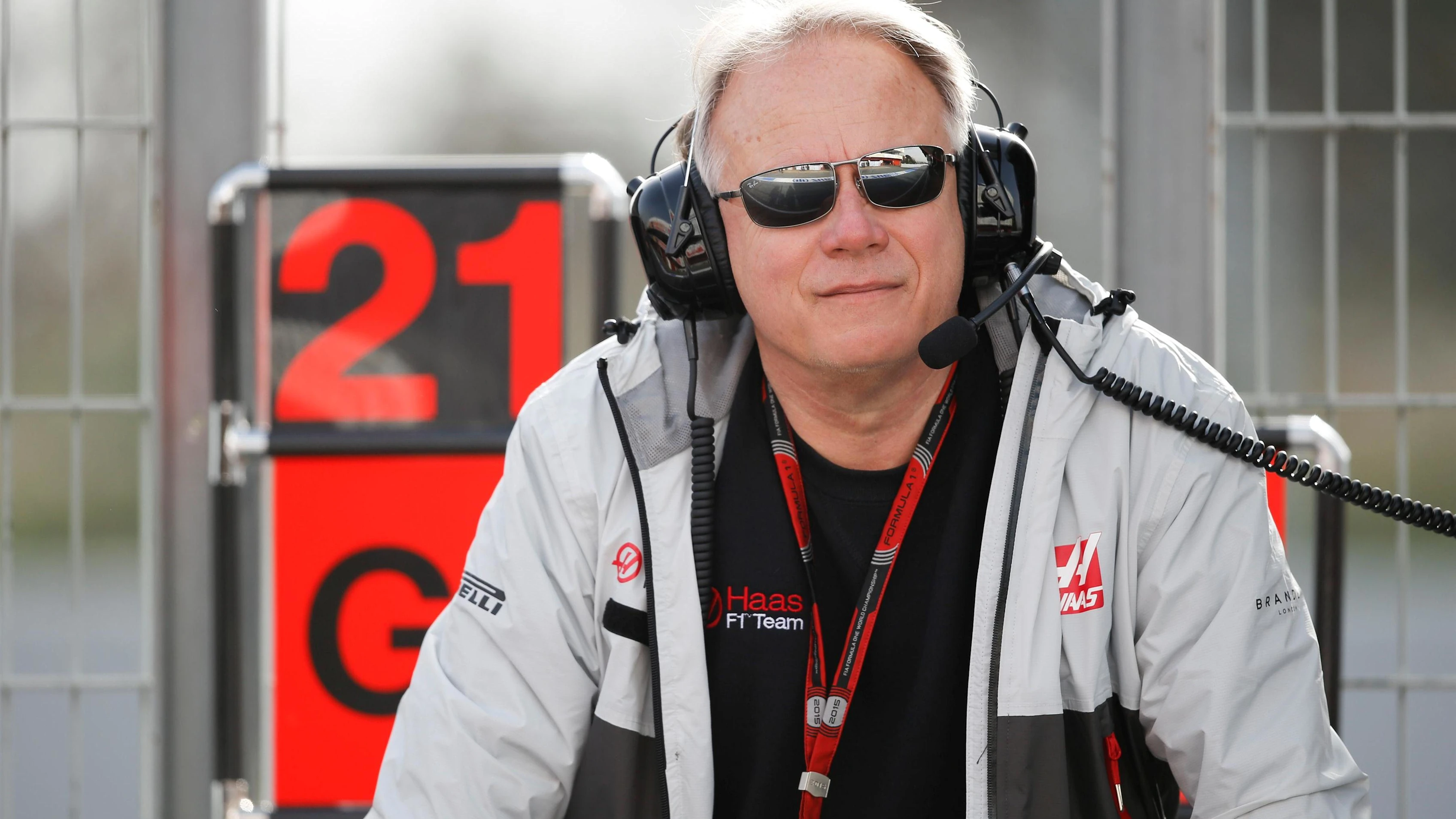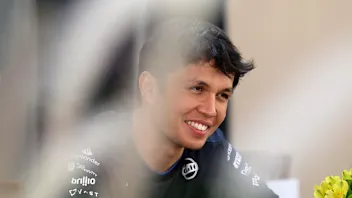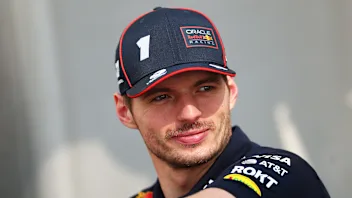It’s been a long time in the making, but this week finally saw the fledgling Haas team make their track debut at pre-season testing in Spain - and an impressive one it was too. The newcomers racked up close to 300 laps - more than both McLaren and Manor - and Esteban Gutierrez’s best lap for the US squad put him 13th fastest of the 23 drivers present. So what did the man behind the project make of it all? We caught up with Gene Haas for an exclusive chat…
Q: Gene, what was going through your mind when you saw your Formula One car going out of the garage for its first lap?
Gene Haas: Something pretty profane: ‘It’s about time!’ (laughs) We have been talking about this for five years.

I was really happy seeing things going a lot better than I had expected
Q: What about your emotions? Pride, satisfaction?
GH: Well, the emotions were: ‘It took us a long time to get here’. But now that it is here it’s: ‘Now let’s hope it won’t backfire!’ As the first day moved on it was really exciting to see how well the team did. These are very complicated cars and I was really happy seeing things going a lot better than I had expected.
Q: Now that you are here to stay, are you satisfied with the process of how Haas F1 Team came into being?
GH: Actually, because we have taken more time than usual we were able to take advantages of situations and windows of opportunities. It all worked to our benefit. If you do something complicated like F1 in a rush, you are probably forced to do things that are not as good as they could be. So in the way Haas F1 came into being, we are really fortunate having got to this point we are now.
Q: In hindsight is there anything you would have done differently?
GH: Ha, boy, you never go back in time in real life! I would not have changed anything - and that is pretty satisfying.
Q: What was the biggest issue to come to terms with? The frequent rules changes?
GH: Initially when we decided to do this project we didn’t even have a license. We decided to do this - and then it took six months to get a license. We were already far into the project and suddenly it dawns on you: ‘Gee, we don’t even have a license! Oh why are we doing this?’ That time was a bit nervous - like building an F1 car, building up a team, and hey, no license!
Q: Your team has bases in the UK, the US and Italy. Team principal Guenther Steiner has said you will cope with the distances because no-one will know any different - but is it really that easy?
GH: It will work. Right now I can’t say if it is going to be easy or difficult. It’s the way the team is built and travelling is anyway a huge part of that business. Maybe ask me again at the end of the season.
Q: You have a very successful state-of-the-art NASCAR Team. If you compare the costs that your F1 team is incurring, how is it looking?
GH: Pretty even. The cost of both teams is almost equal. Okay, we are running four cars in NASCAR and only two cars here, but F1 is a global championship so running two F1 cars makes up as much as my NASCAR team.

I would not have changed anything - and that is pretty satisfying
Q: Did you bring anything from your NASCAR team to F1 racing? Technology, procedures?
GH: Ha, I brought me! (laughs) Yes, indeed we’ve brought some people over - and some titbits and a bit of software and yes, probably in some ways how we go about things. But I can’t think of anything major. We don’t have any preconceived notion of how F1 works so we are going to do what we are comfortable with. Probably our philosophy is pretty different to your normal F1 team. We want to purchase as much as we can instead of engineer it - like we do in NASCAR. Formula One teams seem to be very fundamental in saying: ‘Oh, we are going to produce everything ourselves.’ To us, in NASCAR we don’t do that! We buy everything we can - and that is very natural to us, so maybe we are bringing this over here.
Q: So your approach to F1 racing is a rather pragmatic one: buy whatever you can lay your hands on that is within the rules, instead of priding yourself on self-manufactured parts…
GH: Well, I think everybody is so used to doing this here - it’s probably ingrained in their way of doing things. We never had that. We want to race cars and not get too much involved with production. I do respect the F1 guys, but ultimately when you come to a race I don’t think people know the difference between a self-produced transmission and a purchased transmission. I don’t think that they care.
Q: Given your approach, the team will be watched very closely. Should you be even remotely successful you could end up becoming a role model for others to come into F1 racing. Are you aware of that?
GH: If we are successful my guess is that people will imitate us. Probably some bigger teams do want to have a smaller team. You are only allowed to run two cars and having two more cars that you are associated with - maybe that gives them some sort of advantage. Maybe that would be good for the sport. Maybe what will happen with us as role model is that probably one side will be laughing and the other side crying. So let’s wait and see.
Q: Comparing your two F1 drivers to your NASCAR drivers - what is the difference? F1 drivers are sometimes known for being divas…
GH: The biggest difference is that F1 drivers are pretty young compared to NASCAR drivers. They also seem to be fairly enthusiastic about what they are doing. NASCAR drivers are probably a bit more mature about the business. I think it is harder to drive a NASCAR car than an F1 car: they are bigger, heavier and have far less downforce - so the skills required are completely different. But I think the F1 car requires better reflexes because everything happens so quickly in F1.

We want to finish races first and foremost, and then let’s see about points
Q: It is common knowledge that Romain Grosjean is your number-one driver - is that still valid after four days’ running?
GH: Ha, I can’t predict what’s going to happen in the coming months but I think Romain is more mature then Esteban. He has a lot of experience - he has survived many difficulties. There is more to racing than just being fast. It is also about how to survive in a race. Young aggressive drivers learn that the hard way by crashing their cars - and Romain is past that. He crashed somewhere else and it is important for us not to wreck cars! (laughs)
Q: What are your dreams for your first season?
GH: Reliability is number one - to finish races. I was talking to one of the race strategists and he told me that the drop-out rate in Australia is usually immense - that one time only 11 cars finished the race. So if you can finish you are almost top 10 - finishing the race could get you into the points. We will take advantage of the statistics. The big teams want to win races so are more prone to take chances that might not come out well in the end. So there are two different strategies: we want to finish races first and foremost, and then let’s see about any points. And, as I now know, Melbourne is a good place for that.
Next Up
Related Articles
 Watch as the F1 grid does Secret Santa for 2025
Watch as the F1 grid does Secret Santa for 2025 Albon names moment he's most proud of from 2025
Albon names moment he's most proud of from 2025.webp) End Of Year Reports 2025Aston Martin’s best and worst moments from 2025
End Of Year Reports 2025Aston Martin’s best and worst moments from 2025/TEAM%20PREVIEWSHALF%20TERM%20REPORTS%20DISPLAY%20V1%20(13).webp) End Of Year Reports 2025Racing Bulls’ best and worst moments from 2025
End Of Year Reports 2025Racing Bulls’ best and worst moments from 2025 Verstappen reflects on Mercedes talks and F1 future
Verstappen reflects on Mercedes talks and F1 future.webp) End Of Year Reports 2025Ferrari’s best and worst moments from 2025
End Of Year Reports 2025Ferrari’s best and worst moments from 2025